Reasons to Invest
Protect Purchasing Power (Sustain Wealth)
Most people have heard about inflation and how it can negatively impact one's quality of life by increasing the price of goods and services over time. For example, if a cart of groceries cost $100 last year, the same cart of groceries purchased a year later may cost $102, representing a 2% increase in price, or 2% inflation. If one had decided to put $100 in cash under their mattress a year ago, and went to purchase that same basket of groceries today, they would find that they would only be able to purchase approximately 98% of the groceries from the original cart. Depending on what country you are in, and how inflation is calculated, the deterioration in purchasing power can be:
- mild (less than 2%),
- moderate (between 2 and 10%), or
- or severe (greater than 10%).
In some extreme cases, inflation rates can be tens of thousands of percent as experienced by Zimbabwe in the early 2000's and Venezuela in recent years.
Investing provides a mechanism to protect against the varying degrees of inflation depending on the strategy employed. For example, if one had taken the $100 and placed it into a savings account or bank deposit that returned 2% per annum, they would still be able to buy the same cart of groceries a year later (assuming inflation is <=2%), thereby protecting their purchasing power.
Increase Purchasing Power (Grow Wealth)
The second reason to invest, and easily the most common, is to grow wealth. The desire to grow wealth is usually motivated by either wanting to improve living standards, retire early, or simply to spend more money later on. Whatever the motivation, the end state is the same (more wealth) and investing provides a means to achieve this. The following example will help put into perspective the power of investing with a high compound growth rate.
Take a 15 year time horizon where an individual starts with $5,000 and is able to make a $250 contribution each week. With inflation assumed to be 2.0% annually, three scenarios will be explored:
- The money is stockpiled under a mattress.
- The money is deposited into a savings account that earns 2.0% annually.
- The money is invested into an investment portfolio that returns 10% annually.
The following graph depicts the change in value over time for each strategy. Note that the rates of return for each of the strategies are adjusted to take inflation into account. The concept of real versus nominal rates of return, and the method for calculating these values (namely, taking the geometric mean) will be discussed in a subsequent lesson.

After 15 years, a total of $200,000 was committed to each strategy:
- In the first scenario, the money stockpiled under a mattress is worth approximately $173,623, a 13.2% loss in value due to inflation.
- In the second scenario, the money deposited into the savings account kept pace with inflation and is worth $200,000.
- In the third scenario, the money invested is worth approximately $364,125, an 82.10% increase in value.
In other words, if one had selected the investing pathway, they would have over twice (2.1x) the money at the end of the 15 year period, compared to simply stockpiling cash under a mattress. Not only have they protected their original purchasing power (wealth), but they have increased it by more than double.
With this new-found wealth, the individual could either:
- Use their future investment returns as an additional income stream to increase their standard of living.
- Using the same values given, the $364k investment portfolio would put approximately $28,500 in your pocket in real terms every year based on a 10% nominal return with 2% inflation (i.e. 7.84% real return).
- Let the investments continue to grow and delay gratification for a bigger reward later.
- Sell part or all of the investment portfolio to fund new ventures.
- Engage in philanthropic (charitable) activities.
Summary
In summary, there are two main reasons why someone should invest:
- Protect purchasing power (sustain wealth).
- Increase purchasing power (grow wealth).
The motivation to grow wealth can stem from a variety of things. Whatever the motivation, investing provides a powerful mechanism to grow and sustain wealth through compound growth.